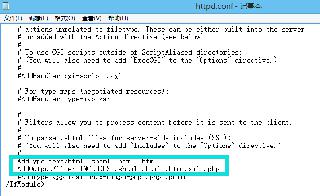將代碼推遲以供以后在python中執(zhí)行(例如javascript中的setTimeout)。
在實踐中,計時器可能是您要做的最簡單的方法。
此代碼將執(zhí)行以下操作:
1秒后,它會顯示“ arg1 arg2”2秒后,它會顯示“ OWLS OWLS OWLS”===
from threading import Timerdef twoArgs(arg1,arg2): print arg1 print arg2 print ''def nArgs(*args): for each in args:print each#arguments: #how long to wait (in seconds), #what function to call, #what gets passed inr = Timer(1.0, twoArgs, ('arg1','arg2'))s = Timer(2.0, nArgs, ('OWLS','OWLS','OWLS'))r.start()s.start()
===
上面的代碼很可能會解決您的問題。
但!還有另一種方法,不使用多線程。它的工作方式更像單線程的Javascript。
對于此單線程版本,您需要做的就是將函數(shù)及其參數(shù)存儲在一個對象中,以及應(yīng)該運行該函數(shù)的時間。
一旦有了包含函數(shù)調(diào)用和超時的對象,只需定期檢查函數(shù)是否準備就緒即可執(zhí)行。
正確的方法是使優(yōu)先級隊列存儲我們將來要運行的所有功能,如下面的代碼所示。
就像在Javascript中一樣,這種方法不能保證該函數(shù)將完全按時運行。運行時間很長的功能將延遲其后的功能。但是,它確實保證了函數(shù)將 不早于其超時運行。
此代碼將執(zhí)行以下操作:
1秒后,它會顯示“ 20”2秒后,它會顯示“ 132”3秒后,它退出。===
from datetime import datetime, timedeltaimport heapq# just holds a function, its arguments, and when we want it to execute.class TimeoutFunction: def __init__(self, function, timeout, *args):self.function = functionself.args = argsself.startTime = datetime.Now() + timedelta(0,0,0,timeout) def execute(self):self.function(*self.args)# A 'todo' list for all the TimeoutFunctions we want to execute in the future# They are sorted in the order they should be executed, thanks to heapqclass TodoList: def __init__(self):self.todo = [] def addToList(self, tFunction):heapq.heappush(self.todo, (tFunction.startTime, tFunction)) def executeReadyFunctions(self):if len(self.todo) > 0: tFunction = heapq.heappop(self.todo)[1] while tFunction and datetime.Now() > tFunction.startTime:#execute all the functions that are readytFunction.execute()if len(self.todo) > 0: tFunction = heapq.heappop(self.todo)[1]else: tFunction = Noneif tFunction:#this one’s not ready yet, push it back onheapq.heappush(self.todo, (tFunction.startTime, tFunction))def singleArgFunction(x): print str(x)def multiArgFunction(x, y): #Demonstration of passing multiple-argument functions print str(x*y)# Make some TimeoutFunction objects# timeout is in millisecondsa = TimeoutFunction(singleArgFunction, 1000, 20)b = TimeoutFunction(multiArgFunction, 2000, *(11,12))c = TimeoutFunction(quit, 3000, None)todoList = TodoList()todoList.addToList(a)todoList.addToList(b)todoList.addToList(c)while True: todoList.executeReadyFunctions()
===
在實踐中,您可能會在while循環(huán)中進行更多操作,而不僅僅是檢查超時功能是否準備就緒。您可能正在輪詢用戶輸入,控制某些硬件,讀取數(shù)據(jù)等。
解決方法我必須在python中執(zhí)行一個程序,該程序需要執(zhí)行一段時間,然后(無論在何處執(zhí)行)它必須將信息轉(zhuǎn)儲到文件中,關(guān)閉文件,然后退出。
在JavaScript中,此行為等同于使用setTimeout(func,1000000)其第一個參數(shù)(func)將是具有退出代碼的函數(shù)的指針,而其第二個參數(shù)將是程序可用的時間的用法。
我知道如何用C制作這個程序(使用SO信號),但是使用python
相關(guān)文章:
1. ASP動態(tài)網(wǎng)頁制作技術(shù)經(jīng)驗分享2. 詳解瀏覽器的緩存機制3. ajax請求后臺得到j(luò)son數(shù)據(jù)后動態(tài)生成樹形下拉框的方法4. .Net加密神器Eazfuscator.NET?2023.2?最新版使用教程5. phpstudy apache開啟ssi使用詳解6. JSP之表單提交get和post的區(qū)別詳解及實例7. .Net Core和RabbitMQ限制循環(huán)消費的方法8. jsp文件下載功能實現(xiàn)代碼9. Xml簡介_動力節(jié)點Java學院整理10. 存儲于xml中需要的HTML轉(zhuǎn)義代碼

 網(wǎng)公網(wǎng)安備
網(wǎng)公網(wǎng)安備